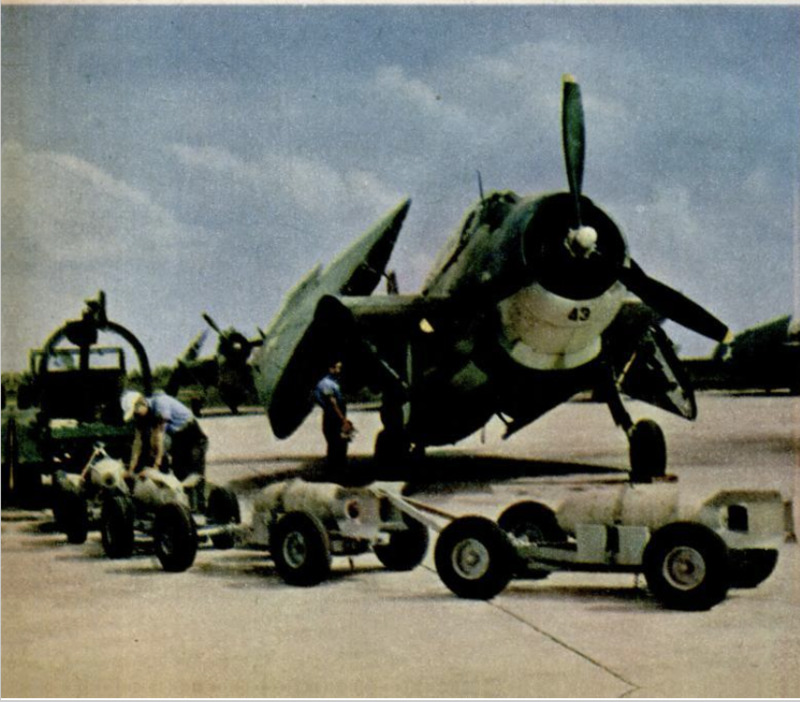TBF Grumman Avenger a midwing torpedo plane serves as light bomber and antisubmarine plane
Contenuto
-
Titolo
-
TBF Grumman Avenger a midwing torpedo plane serves as light bomber and antisubmarine plane
-
Article Title and/or Image Caption
-
Title: The Avenger scores again
-
Subtitle: Flying off the escort carriers with depth charges, versatile TBF's
clear the seas of subs
-
extracted text
-
SOMEWHERE in the middle of the At-
lantic, a submarines periscope breaks
water. Scarcely have the first men scram-
bled out of the conning tower before a
pursuit-speed, single-engined giant drops
out of the clouds. The plane opens its
capacious belly bomb bay; out tumble
depth charges, and the erstwhile wolf of
the sea becomes just another oil slick.
For the success of the Navy escort-
carrier system that has vastly reduced the
percentage of merchant-vessel sinkings,
much credit is due to the Navy's carrier-
borne maid-of-all-work, the TBF Grum-
man Avenger.
Designed as a torpedo plane, the Aven-
ger was the first single-engined U. S.
carrier type to carry internally a full 21-
inch tin fish. It also serves as a light
bomber, carrying the standard bombsight
and bombs, and as an antisubmarine plane.
The Avenger was born when the cruising
speed of the Douglas Dauntless fell short
of modern combat standards. The new
ship had to have enough cruising range
to attack enemy capital craft inside the
widest possible protective net, with weight
to spare for defensive armament so that
it would not require a fighter escort.
Grumman's answer was a midwing
monoplane which many early Jap spotters
mistook for the F4F Grumman Wildcat
fighter. The new ship had & wing span of
54 feet 2 inches and was 40 feet long.
Powered by a 1,700-hp., 14-cylinder Wright
Cyclone engine, it developed a top speed
of 253 m.p.h., at sea level. Cruising varied
between 120 and 200 m.p.h., depending on
the mission. Carrying a normal load, it
had a cruising range of over 900 miles.
The Avenger is a three-place airplane,
carrying a pilot, observer-gunner, and
radio operator. Probably the greatest sin-
gle advantage of the plane is its amazingly
low landing speed. The biggest ship on
the carrier, it actually requires the same
take-off run as the fighters, and even less
deck space on which to land.
-
Autore secondario
-
William S. Friedman (article writer)
-
Harold Kulick (photographer)
-
Lingua
-
eng
-
Data di rilascio
-
1944-01
-
pagine
-
92-93
-
Diritti
-
Public Domain (Google digitized)
-
Archived by
-
Lorenzo Chinellato
-
Marco Bortolami (editor)



